Day 63 - Terraform Variables 🔧
 Nilkanth Mistry
Nilkanth Mistry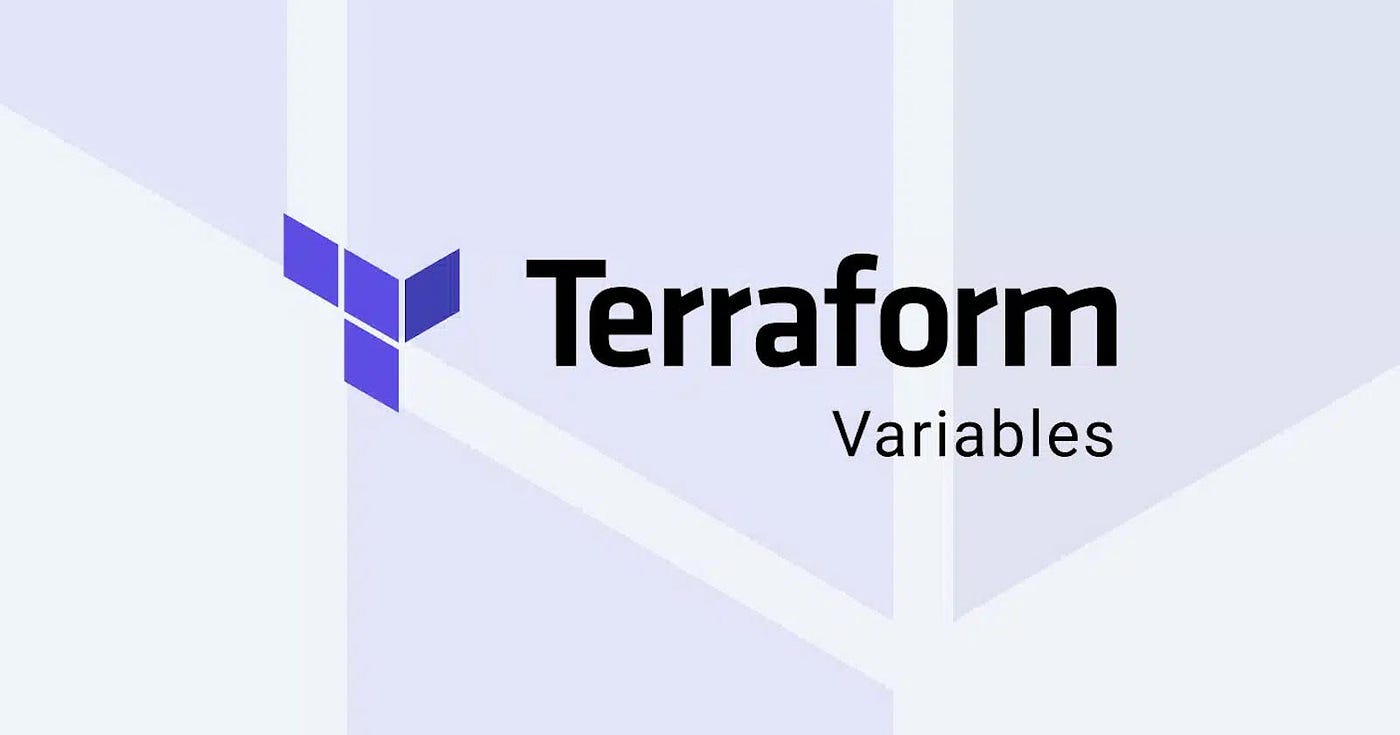
Hello, DevOps enthusiasts! Welcome to Day 63 of the #90DaysOfDevOpsChallenge. Today, we'll explore variables in Terraform. We'll see how they help manage configurations effectively. Let's dive in and get hands-on with some practical examples on AWS! 🌟
Understanding Terraform Variables 🧩
Variables in Terraform are essential for storing values such as instance names, configurations, and more. They help make your code modular and reusable.
Install Terraform:
sudo apt-get update
sudo apt-get install -y gnupg software-properties-common curl
curl -fsSL https://apt.releases.hashicorp.com/gpg | sudo apt-key add -
sudo apt-add-repository "deb [arch=amd64] https://apt.releases.hashicorp.com $(lsb_release -cs) main"
sudo apt-get update
sudo apt-get install terraform
terraform -version
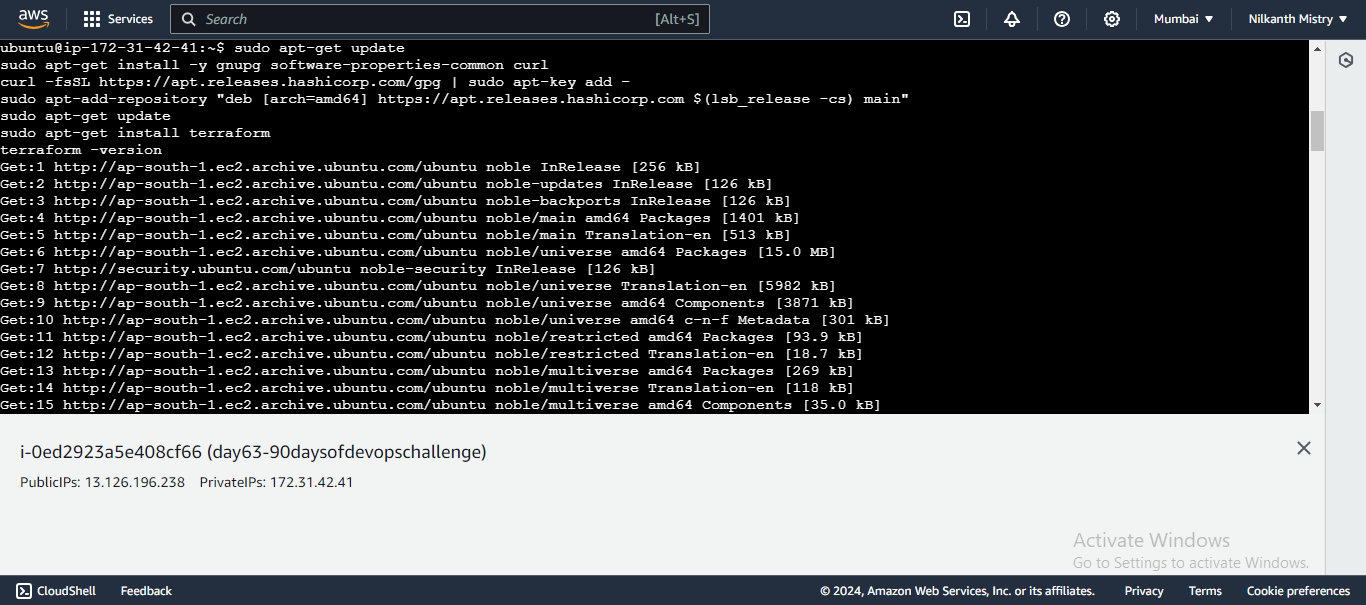
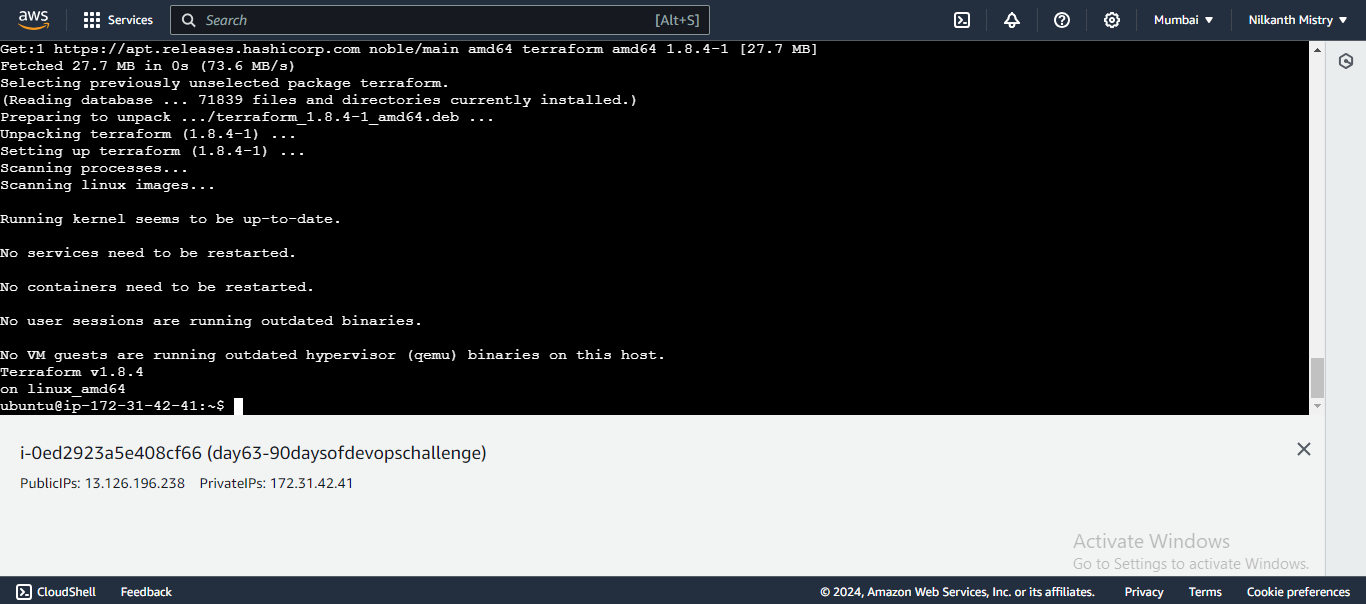
Step 1: Creating Variables in Terraform 📜
Create a new file named
variables.tf:touch variables.tf📁 File created!
Add the following variable definitions in
variables.tf:variable "filename" { default = "/home/ubuntu/terraform-tutorials/terraform-variables/demo-var.txt" } variable "content" { default = "This is coming from a variable which was updated" }✏️ Variables defined!

Step 2: Using Variables in main.tf 🌐
Create a new
main.tffile if you don't have one already:touch main.tf📄 File created!
Add the following code in
main.tfto use the variables:resource "local_file" "devops" { filename = var.filename content = var.content }📜 Variables used in resource!
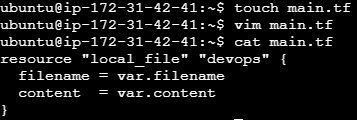
Data Types in Terraform 📚
Terraform supports various data types like Map, List, Set, and Object. Let's see some examples.
Step 3: Using Map Data Type 🗺️
Add a map variable to
variables.tf:variable "file_contents" { type = map(string) default = { "statement1" = "this is cool" "statement2" = "this is cooler" } }🗺️ Map variable added!
Step 4: Using List, Set, and Object Data Types 📋
Add list, set, and object variables to
variables.tf:variable "my_list" { type = list(string) default = ["one", "two", "three"] } variable "my_set" { type = set(string) default = ["apple", "banana", "cherry"] } variable "my_object" { type = object({ name = string age = number active = bool }) default = { name = "John Doe" age = 30 active = true } }📋 Variables for list, set, and object added!
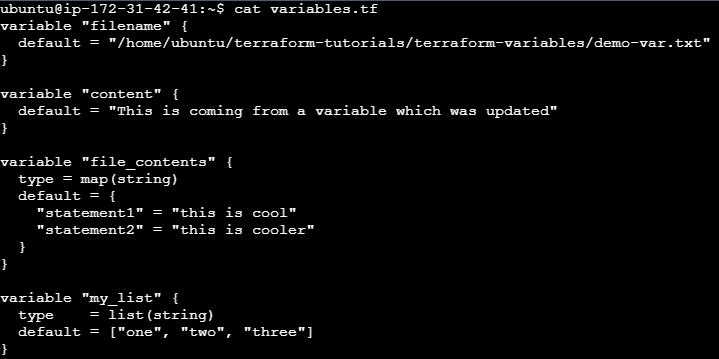
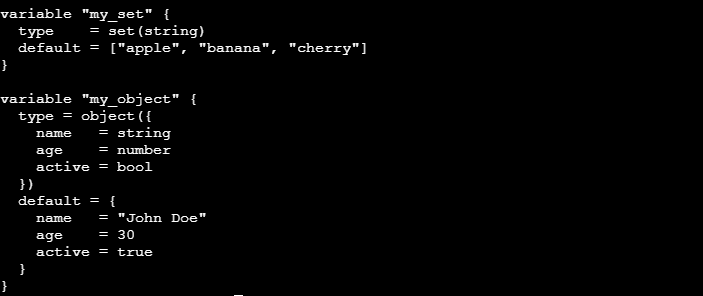
Step 5: Using these Variables in main.tf 📑
Access and print these variables in
main.tf:output "list_output" { value = var.my_list } output "set_output" { value = var.my_set } output "object_output" { value = var.my_object }🔄 Variables accessed and outputs defined!
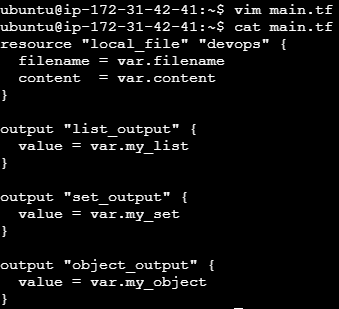
Step 6: Initialize and Apply the Configuration 💻
Initialize your Terraform configuration:
terraform init🏁 Initialization complete!
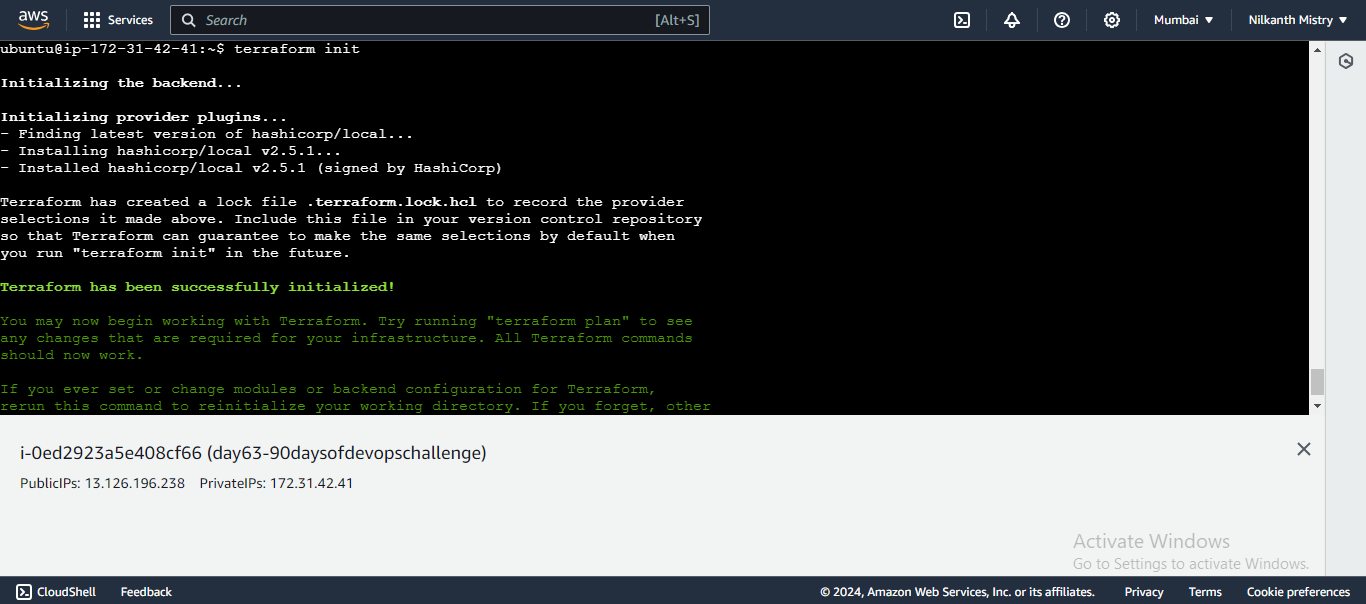
Apply the Terraform configuration to see the outputs:
terraform applyReview the execution plan and confirm by typing
yes. ✔️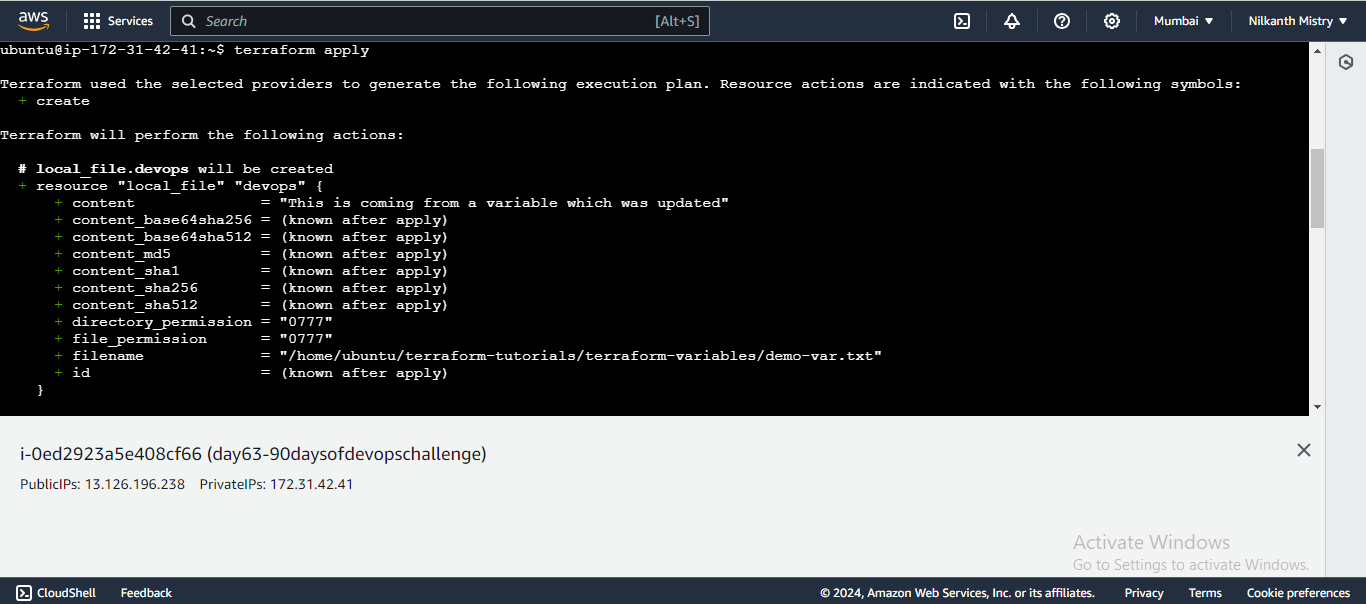
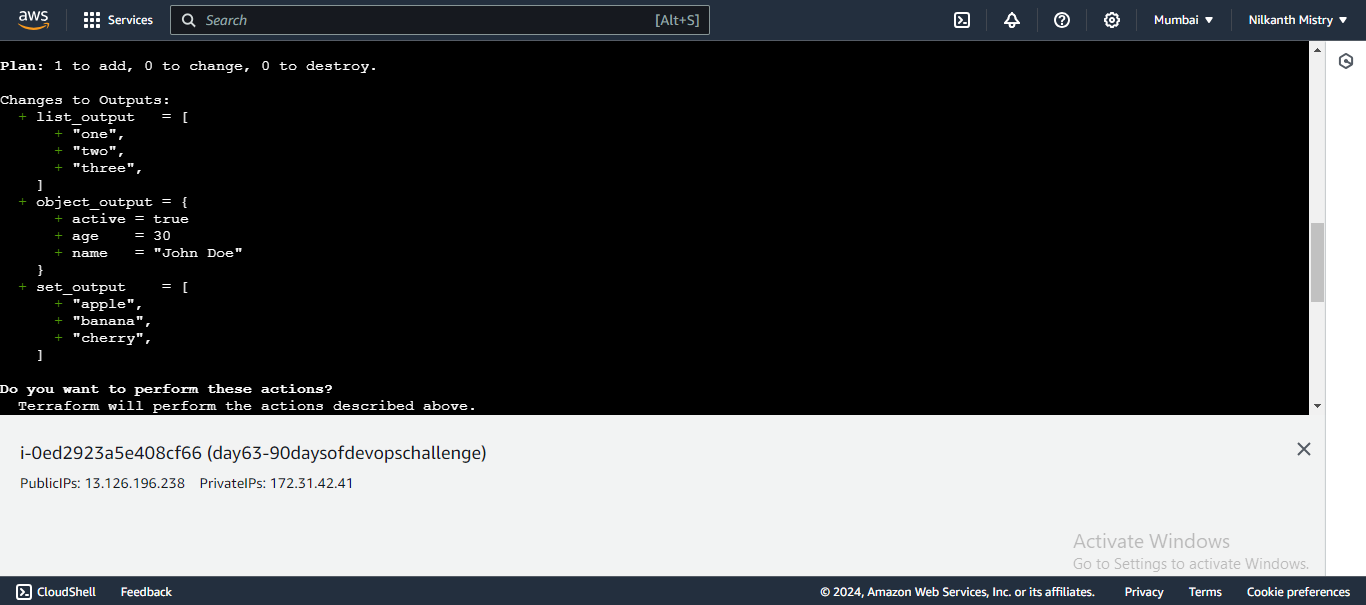
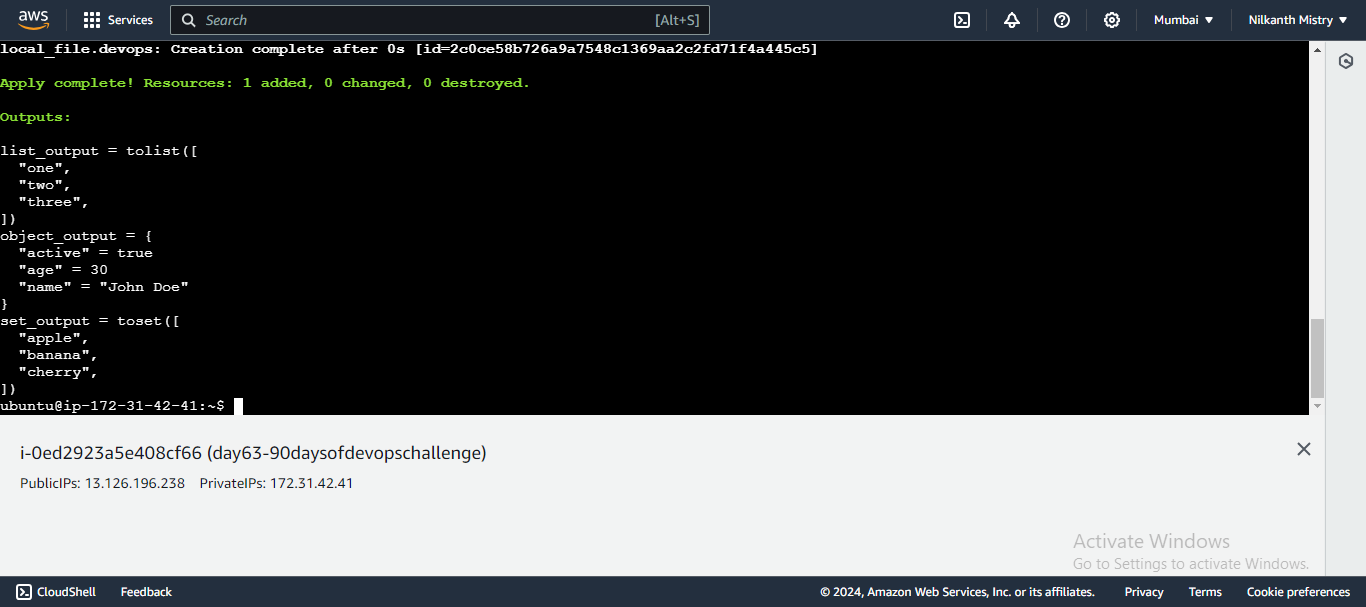
Step 7: Refreshing the State 🔄
Refresh the Terraform state:
terraform refreshThis reloads the variables and updates the state file. 🔄 State refreshed!
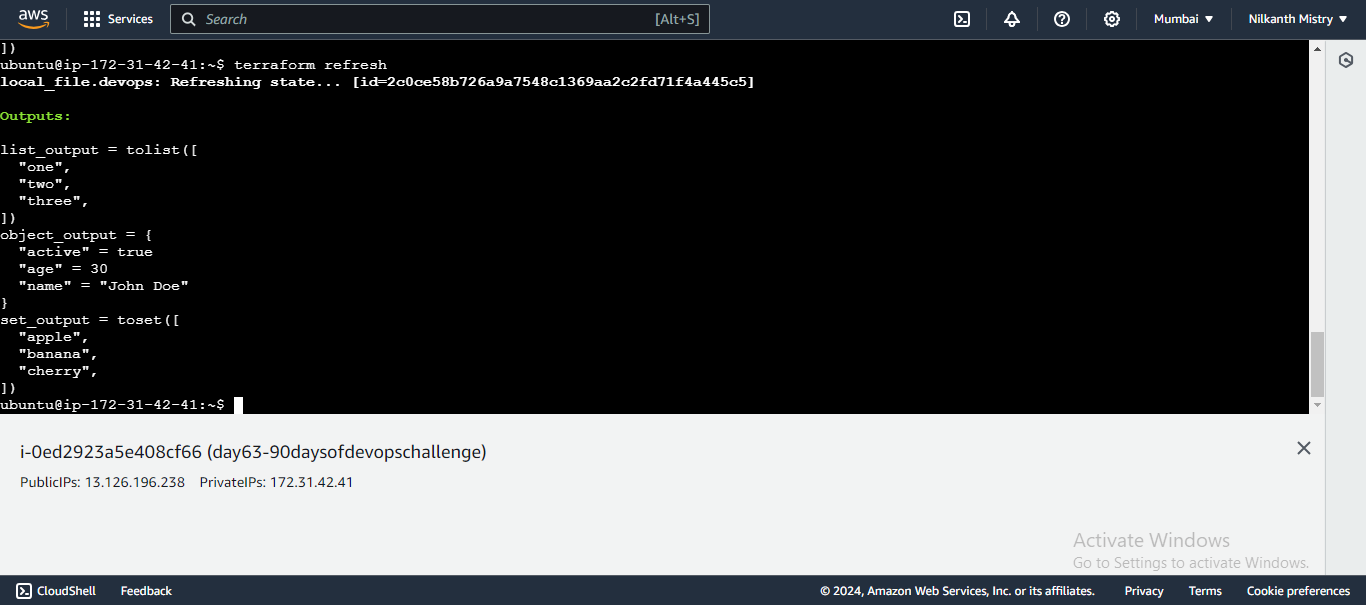
Summary 📚
Today, we've covered how to:
Define and use variables in Terraform.
Utilize different data types like map, list, set, and object.
Initialize and apply Terraform configurations.
Refresh Terraform state.
Keep practicing and happy learning! 🚀
Feel free to reach out if you have any questions or run into any issues. See you tomorrow for another exciting day of the #90DaysOfDevOpsChallenge! 🌟
Subscribe to my newsletter
Read articles from Nilkanth Mistry directly inside your inbox. Subscribe to the newsletter, and don't miss out.
Written by

Nilkanth Mistry
Nilkanth Mistry
Embark on a 90-day DevOps journey with me as we tackle challenges, unravel complexities, and conquer the world of seamless software delivery. Join my Hashnode blog series where we'll explore hands-on DevOps scenarios, troubleshooting real-world issues, and mastering the art of efficient deployment. Let's embrace the challenges and elevate our DevOps expertise together! #DevOpsChallenges #HandsOnLearning #ContinuousImprovement